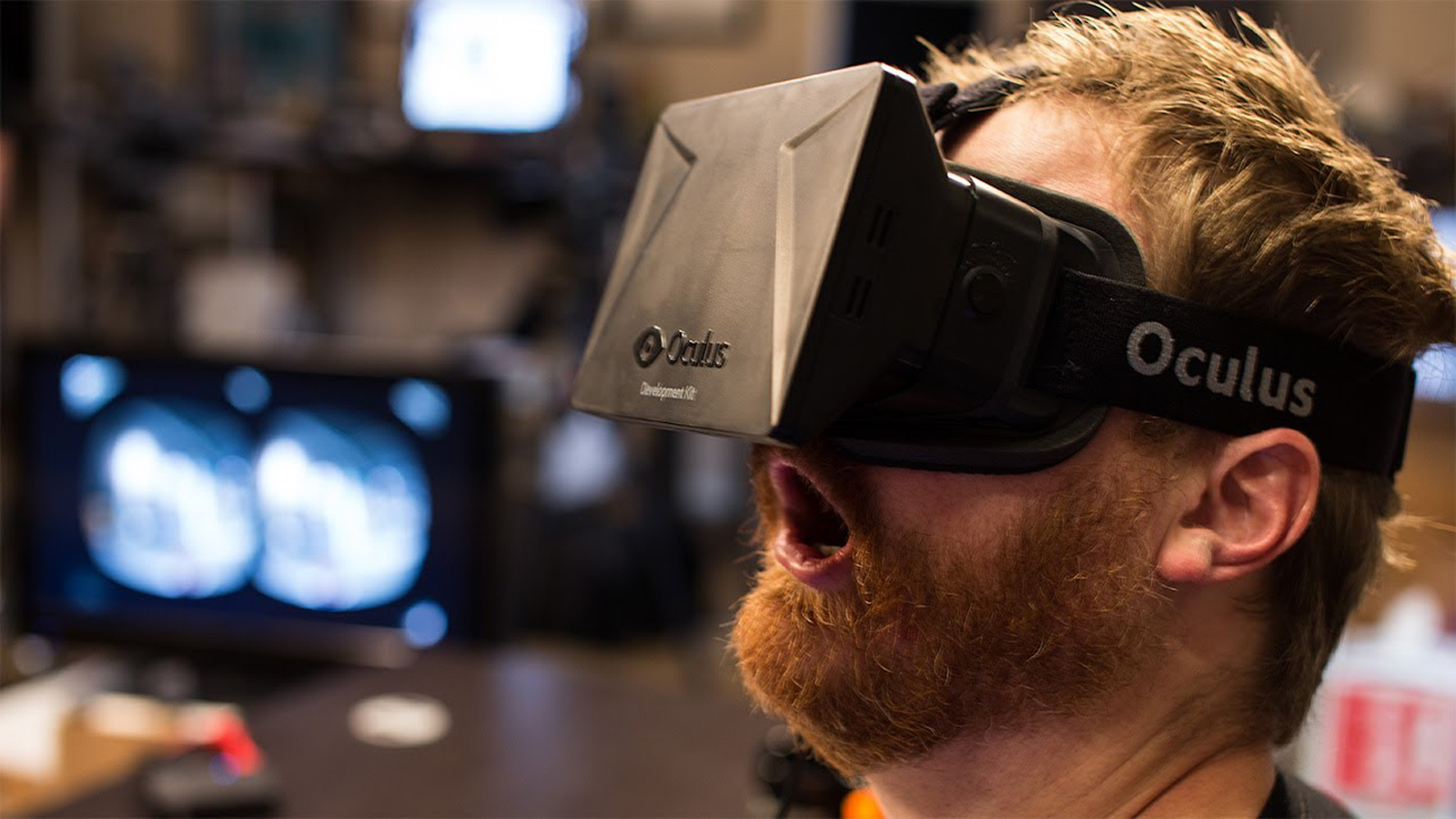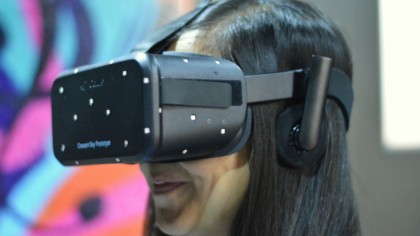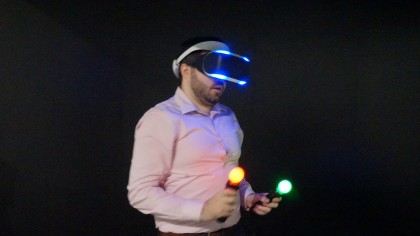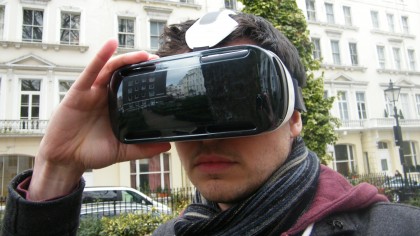VR is the future, but it looks stupid right now
How long will it take today's VR headsets to evolve into something less embarrassing to use?

New technologies usually take a few stumbles before finding their winning stride. Decades went by before the boxy and cumbersome form factor of early mobile phones chiseled down to the appealing standard we see in devices like the LG G Flex 2 and iPhone 6 today.
Similarly, today's VR headsets face a long road of trial and error ahead of them. While the majority of the efforts have focused on building software-driven experiences in VR - many of which are coming together quite nicely - the current hardware exists mostly as proofs of concept. These headsets are incredibly rough looking and spilling with cables. In short, they look ridiculous.
Just check around on TechRadar. I'm sure you'll seen an image of me, or one of the other staffers - normally graceful, angelic human beings - reduced to perma-derp status with a gaping mouth. Here's one to admire.

If you can't get enough of these photos, there's even an entire blog devoted to posting pictures of people looking stupid while wearing VR headsets.
How long will VR hopefuls have to wait before the headsets finally stop embarrassing us? This technology from the future has finally arrived and it could take a while - though likely not decades - to sharpen. Still, I have a few ways to speed up the process.
Kick R&D into overdrive
It may seem like new technology appears out of thin air into existence, but that's not the case. Finished products are the end result of years of thinking and tinkering, building up, tearing down and, of course, milking a research and development fund for its worth.
And these tech giants, some of the biggest and most profitable companies in the world, have been dumping massive amounts of R&D funds on perfecting the recipe. Microsoft and Google's research and development budget over the last year alone is almost a combined $14 billion.
Sign up for breaking news, reviews, opinion, top tech deals, and more.

Granted, each company is working on lots of other projects aside from VR, but, what gives? These companies know wearing these headsets is embarrassing, right? Man, I hope they do. Nevertheless, a laser-focused R&D initiative could give today's virtual reality headsets the jolt of gloss they need to look good, or at least not as wacky.
Equal ground for software and hardware
The first time I tried VR was at Disney World in Florida. I was 11 and the whole experience left me dizzy and disappointed. As a lover of games at a young age, I was aware that VR had potential, but I was let down that it was totally missing the mark. Fast forward to late last year when I was lucky enough to attend a press event where I had my first encounter with modern VR. My brief experience with Sony's Project Morpheus pre-release software now has me excited for its official release. The demos were everything I had hoped for: lag-free, immersive, a little bit scary and fun as hell.

Sony isn't the only one that's whipped up an early winning recipe. In its latest and most promising go at becoming a mainstay in the tech world, VR has attracted names as big as an emerging technology can possibly net. Google, Oculus, Samsung, LG and Microsoft are all chomping at the bit to get VR out there in some form. That's a lot of muscle.
But as of now, efforts are narrowly focused on the software side of things, which is arguably the area most in need of polish if VR is to be taken seriously this time around. Those gears have been churning full-speed for a few years and results are coming to surface. Samsung's Milk VR was announced and previewed at CES 2015 for a release later this year. Share for the Oculus Rift is teeming with content for developers and early adopters to try out. Microsoft's HoloLens looks to tie-in Windows 10 to bring a unique blend of VR and augmented reality later this year.
Hardware, on the other hand, is generally a mess. Reflecting back to my experience with Project Morpheus, it took a few minutes to get me strapped up and ready to go. On top of that, a Sony representative was even on hand to corral the mass of cables from getting tangled around my feet while I played. Yeah, it's a prototype, but the experience made me skeptical of how much things can improve before its - as of now - undetermined launch.

It's time for the pioneers of modern VR to begin shifting more of their magic on hardware design. There's no better place to start than by cutting the cord between the headset and the device. Easier said than done, but it's one of the biggest inhibitors in the way of making VR look cool. Only once the sloppy external components get internalized, can companies begin focusing on shrinking down and polishing the form factor of the headsets. Seeing how much the Oculus Rift has reduced its bulk since DK1 gives me hope that we're in for exciting improvements.
Strive for the competitive edge
...because no one has it yet. As of right now, it's anyone's game. But how does a company make a VR headset that rises far above the efforts of others? That's for the winner to answer, but ideally, it will be a hybrid of what we want and what we didn't know we wanted.
Later in 2015, we'll hopefully see the next big wave of VR headsets hit store shelves. And while they will bring new and exciting ideas to the space, they won't be perfect and they'll probably still be embarrassing to use. But we'll get there, eventually.
- Title image credit goes to White Guys Wearin' Oculus Rifts

Cameron is a writer at The Verge, focused on reviews, deals coverage, and news. He wrote for magazines and websites such as The Verge, TechRadar, Practical Photoshop, Polygon, Eater and Al Bawaba.